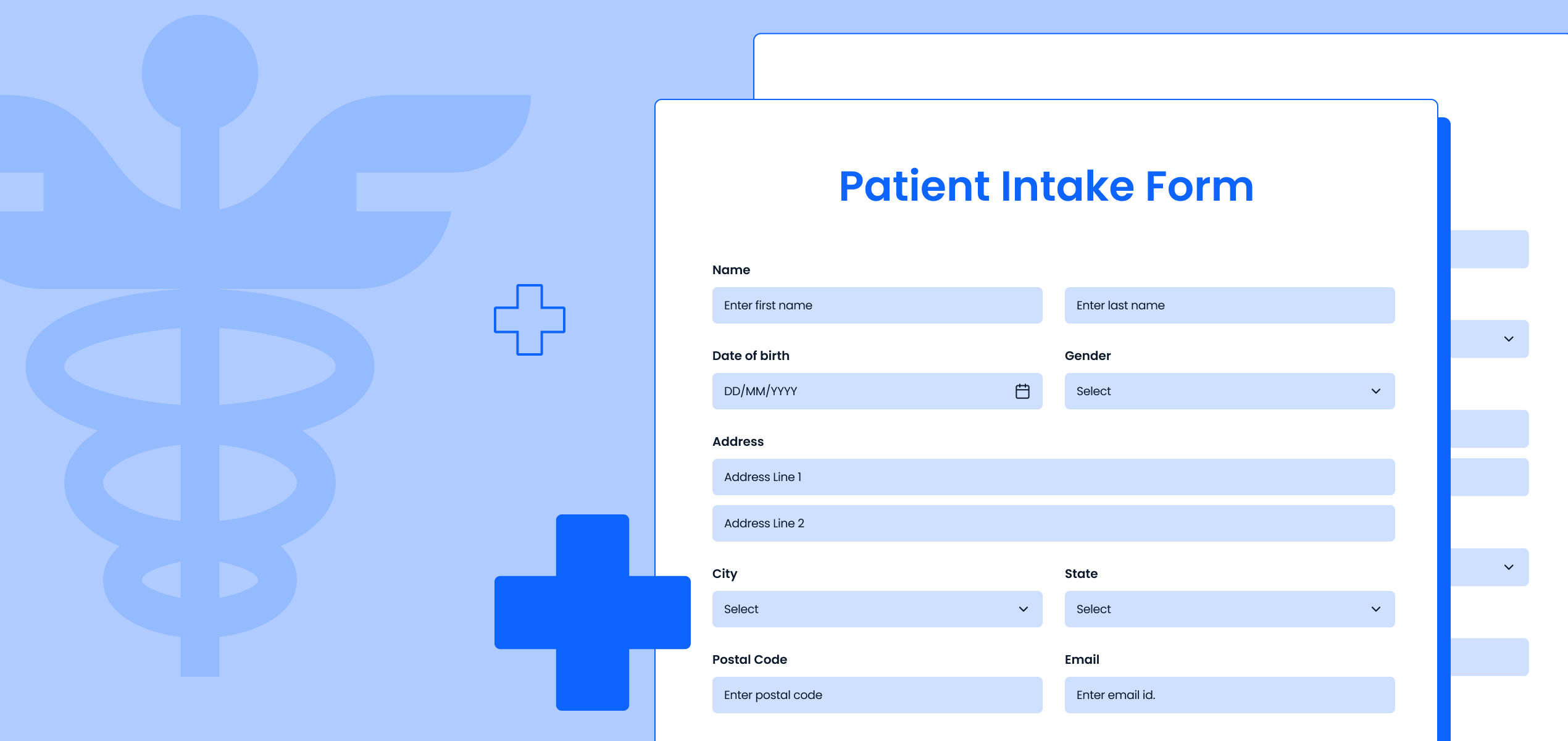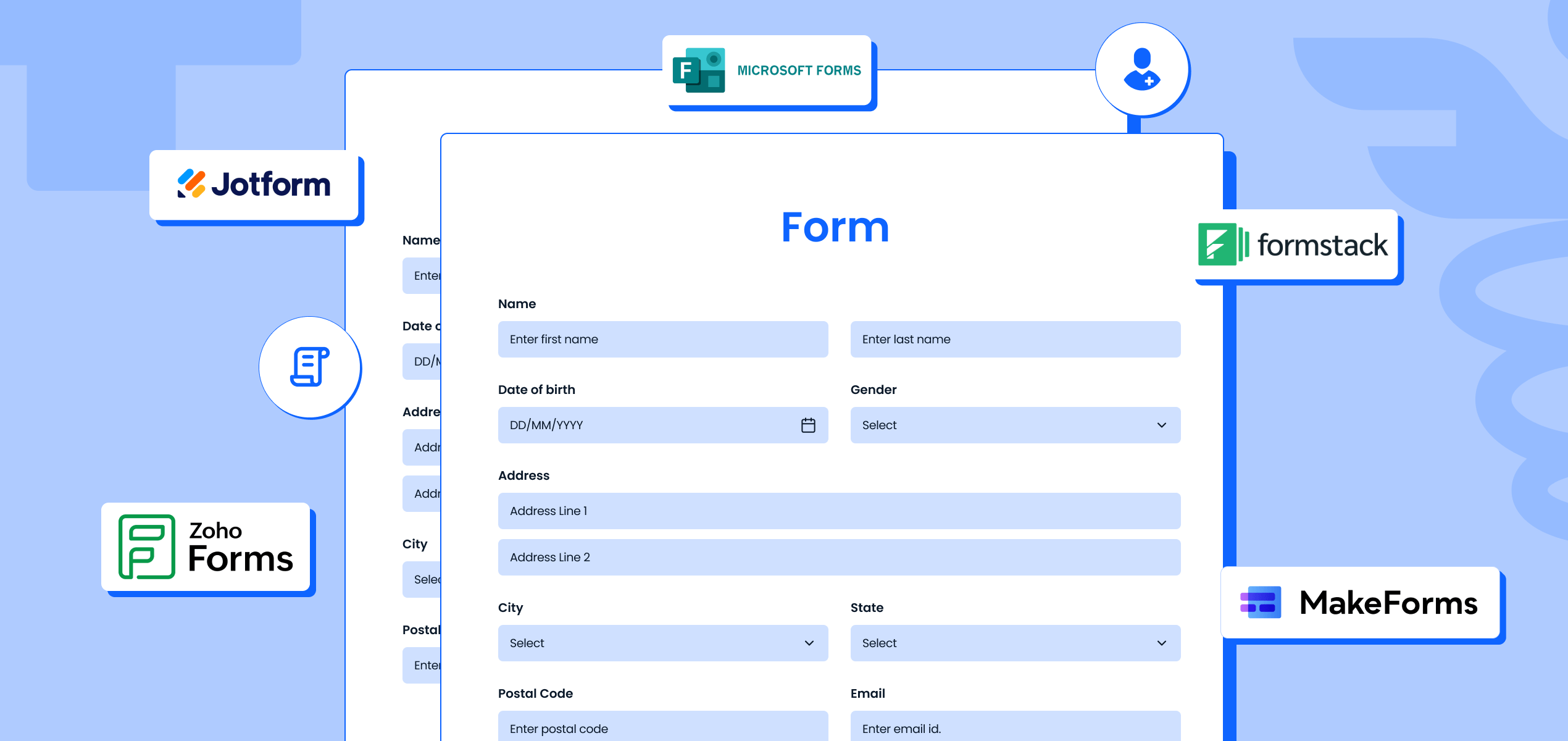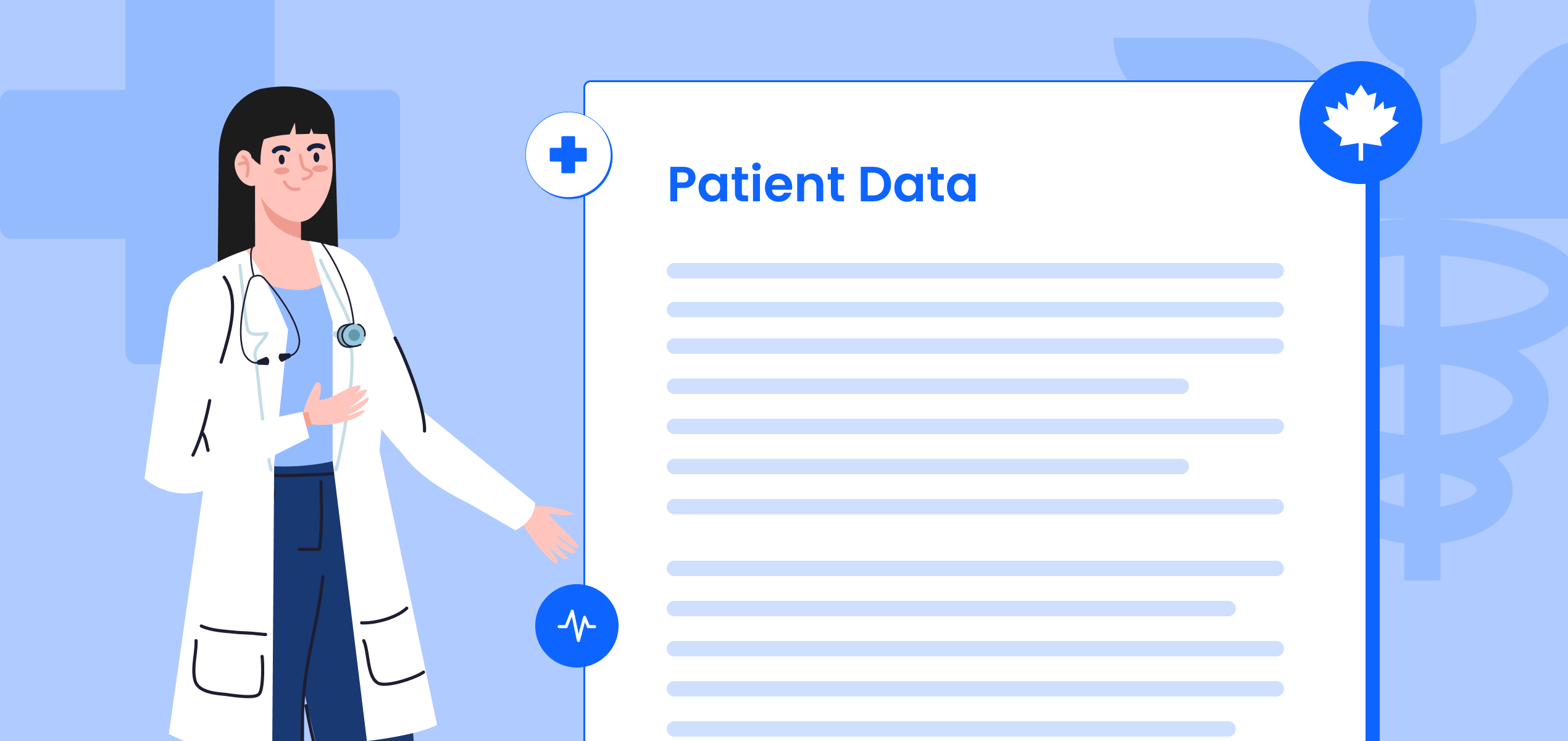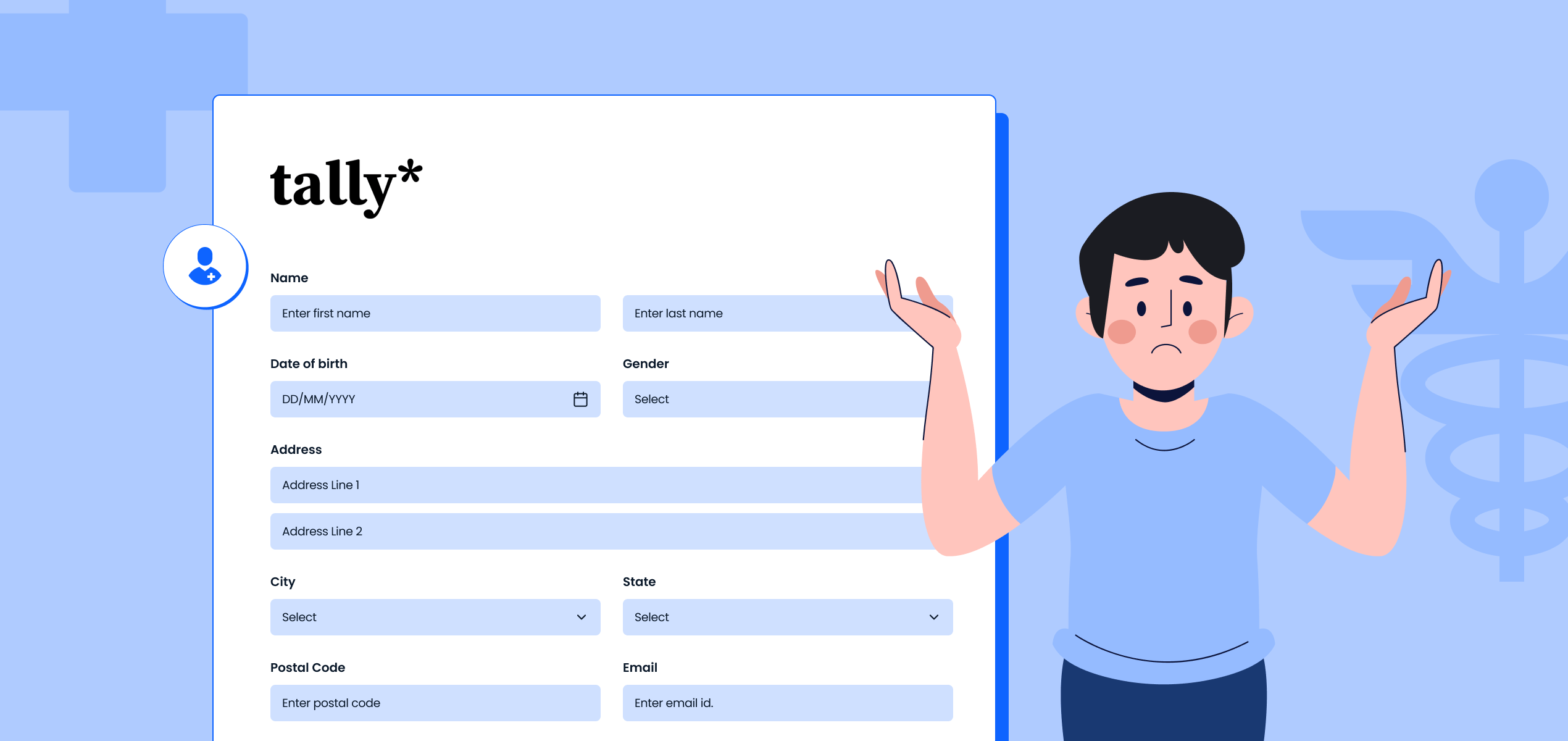Summary:
- User-friendly patient intake forms benefit both healthcare organizations and patients by improving wait times, reducing errors, and increasing patient satisfaction.
- The secret to creating user-friendly forms lies in using a logical flow, mobile-responsive design, leveraging conditional logic, and straightforward but impactful features like pre-filled fields, the ability to upload documents and collect electronic signatures.
- By implementing these features, healthcare organizations can create a smoother patient experience, improve data collection, and potentially generate more positive reviews.
Patient intake forms are often the first point of contact for new and returning patients, and they play a very important role in setting the tone for their experience. Overly complex or confusing intake forms can very easily create frustration, delays, and disturb a patient’s impression of your organization.
In this blog we explore the benefits of user-friendly patient intake forms. We’ll also delve into eight key practices to ensure your online intake forms are efficient, informative, and super mobile-friendly.
Here’s how user-friendly patient intake forms benefit both your practice and your patients.
- Improved Patient Experience: Streamlined forms reduce wait times and anxiety for patients, leading to higher satisfaction.
- Increased Efficiency: Staff can spend less time deciphering handwriting or correcting errors, allowing them to focus on patient care.
- Enhanced Data Accuracy: Clear and concise forms minimize errors during data entry, improving the accuracy of your patient records.
- Boosted Patient Engagement: User-friendly forms encourage patients to complete them fully, providing valuable information for their care.
What are Patient Intake Forms and Who Uses Them?
Patient intake forms collect essential demographic, medical history, insurance, and reason-for-visit information. Patient intake forms are used by a variety of healthcare providers across multiple settings.
- Medical Practices: Doctors’ offices use patient intake forms to gather essential health information before a patient’s appointment. This includes medical history, current medications, and the reason for the visit.
- Hospitals: In hospital settings, patient intake forms are used during the admission process to collect vital health information and to understand the patient’s medical background and any immediate care needs.
- Dental Offices: Dentists also use intake forms to record dental history, current dental concerns, and general health information, which can affect dental treatment.
- Mental Health Professionals: Psychologists, psychiatrists, and therapists use specialized intake forms to understand mental health history, symptoms, and treatment goals.
- Chiropractic and Physical Therapy Clinics: These practitioners use intake forms to identify areas of pain, previous injuries, and other physical health details relevant to treatment.
- Alternative Medicine Practitioners: Providers such as acupuncturists, naturopaths, and homeopaths use intake forms to gather comprehensive health information that guides their holistic treatment approach.
Transform Your Practice with User-Friendly Forms
By implementing user-friendly forms, your practice can experience several positive transformations:
- Reduced Patient Wait Times: Efficient forms allow for quicker check-in and less time spent answering questions about the form.
- Improved Patient Engagement: User-friendly forms empower patients to actively participate in their care by providing accurate and complete information.
- More time for diagnosis: Clear and concise forms lead to better quality data, empowering nurses and doctors to prepare for patient interaction and expedite care, aiding in more time spent on diagnosis and treatment.
- Positive Online Reviews: Streamlined forms contribute to a smoother patient experience, potentially leading to more positive online reviews.
8 Best Practices for User-Friendly Patient Intake Forms
Now that we understand the transformative power of user-friendly patient intake forms, let’s dive into the specifics of creating them. Here are eight key principles to consider:
1. Keep it Simple and Clear:
- Logical Flow: Consider the patient journey as they complete the form. Group information into clear sections (demographics, medical history, insurance) and arrange questions in a logical sequence that follows this journey. This intuitive structure minimizes confusion and guides patients effortlessly.
- Minimize Medical Jargon: Avoid medical jargon that your patients might not understand. Opt for plain language that is clear and concise.
If a specific term is necessary, consider adding a tooltip that appears on hover, providing a brief explanation without cluttering the form.
Here’s an example, instead of “Date of Birth (DOB),” use “Date you were born.” Add a tooltip explaining “Please enter your date of birth in MM/DD/YYYY format.”
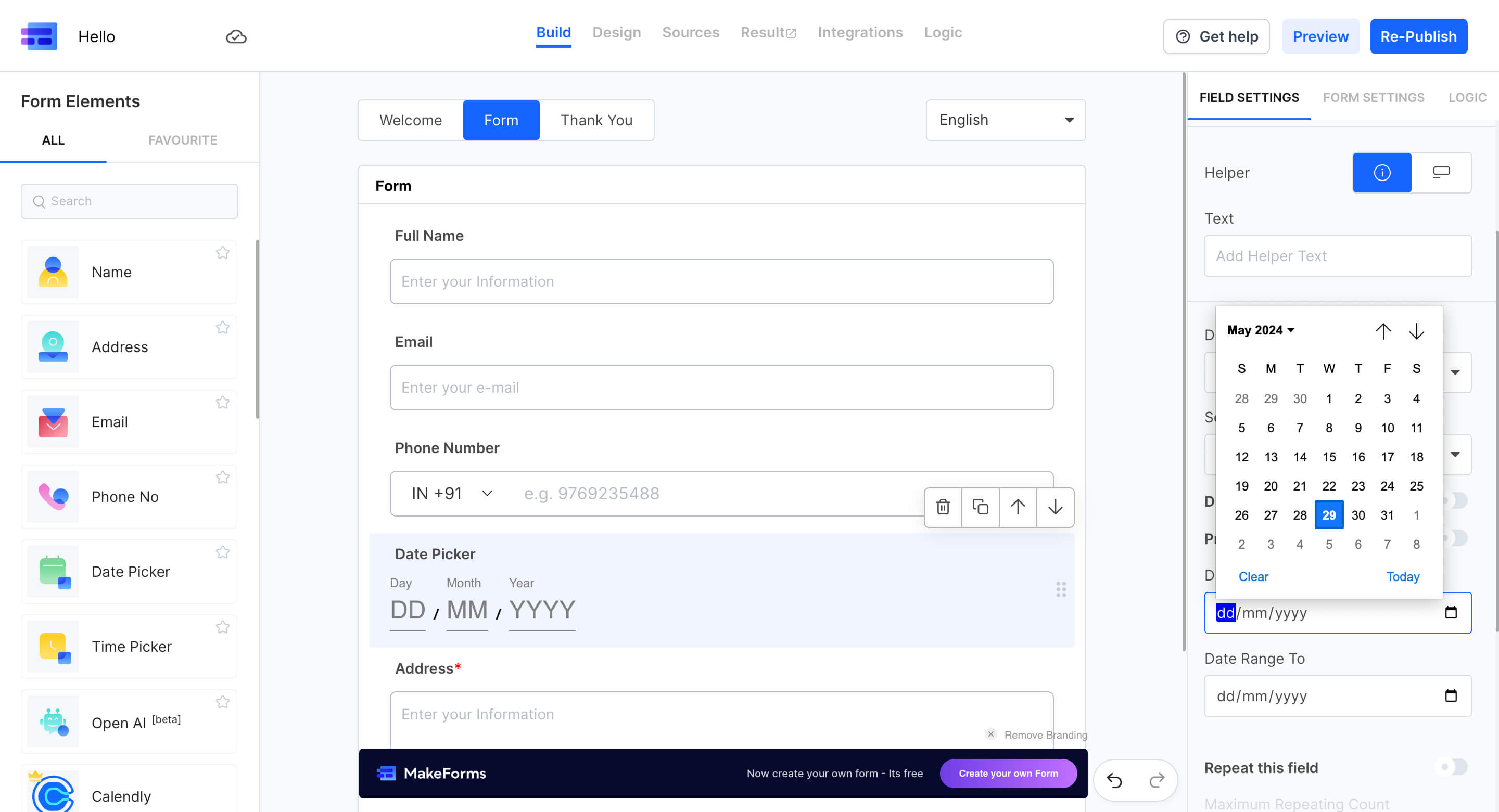
2. Mobile-Friendly Design
Did you know, over 70% of internet users access forms via smartphones and tablets? This is why it’s crucial to create online forms that are mobile-friendly.
Start by ensuring a font size of at least 16px for comfortable reading on mobile devices. Small fonts can be frustrating and lead to errors, so prioritize clarity and readability.

Next, use a form builder that automatically adjusts the layout for optimal viewing on various devices. This eliminates the need for patients to zoom in and out or scroll excessively, creating a smooth experience regardless of the device used.
3. Leverage Conditional Logic
Conditional logic allows the form to adapt dynamically based on previous answers. This streamlines the process for patients and reduces errors:
Example 1: If a patient selects “no” for “Do you have any allergies?”, hide the question “Please list your allergies.” There’s no need to burden patients with questions that don’t apply to their situation.
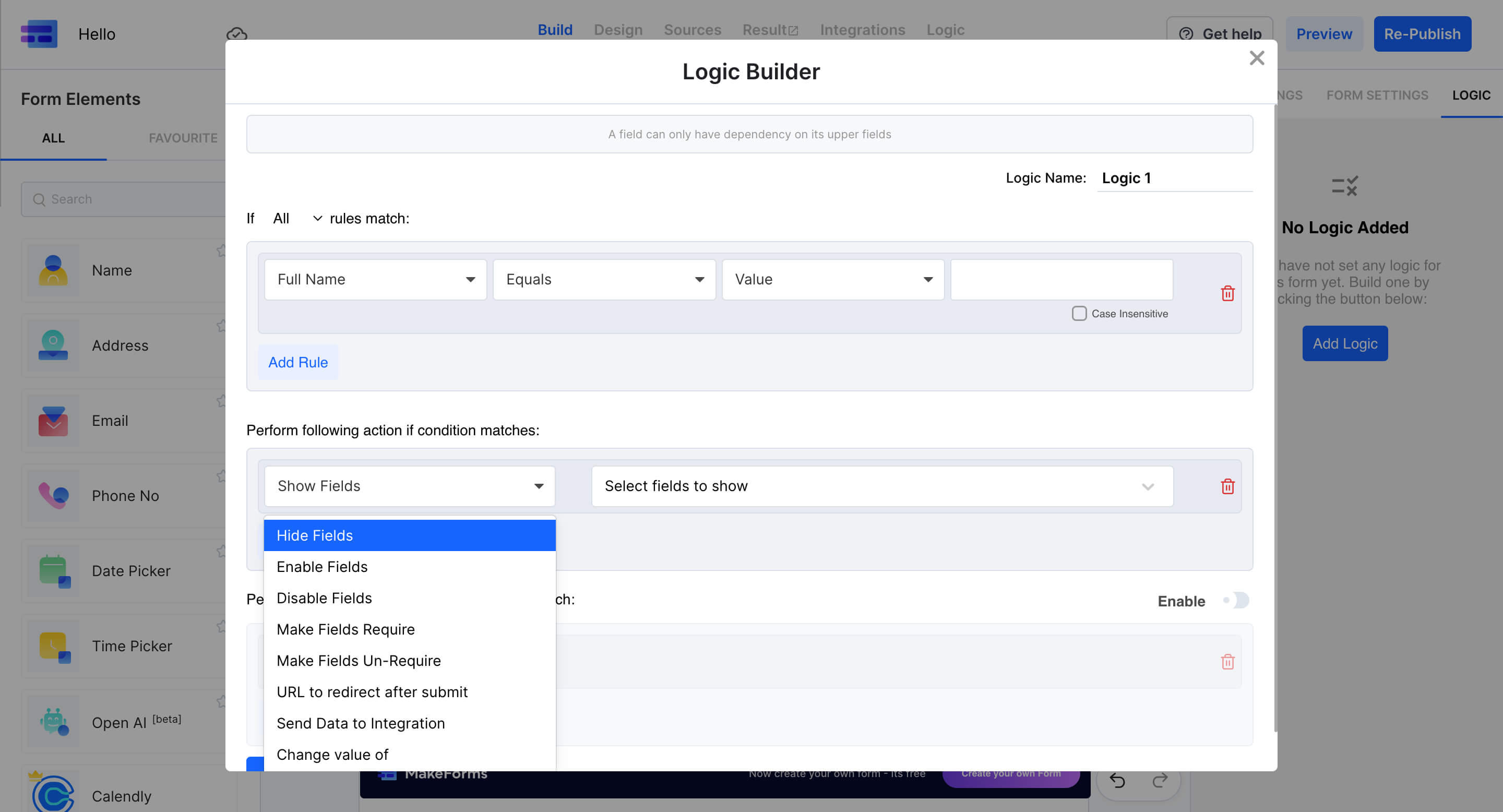
This ensures you collect the most relevant information for each patient without overwhelming them with irrelevant questions.
4. Save Time for Everyone:
Pre-Filled Fields: Utilize existing patient records to pre-populate certain fields (name, address, date of birth) whenever possible. This reduces redundancy and saves valuable time for both patients and staff.
Auto-Save Progress: Allow patients to save their progress and return later to complete the form at their own pace. This is especially helpful for patients who may need to gather information before finishing the form.
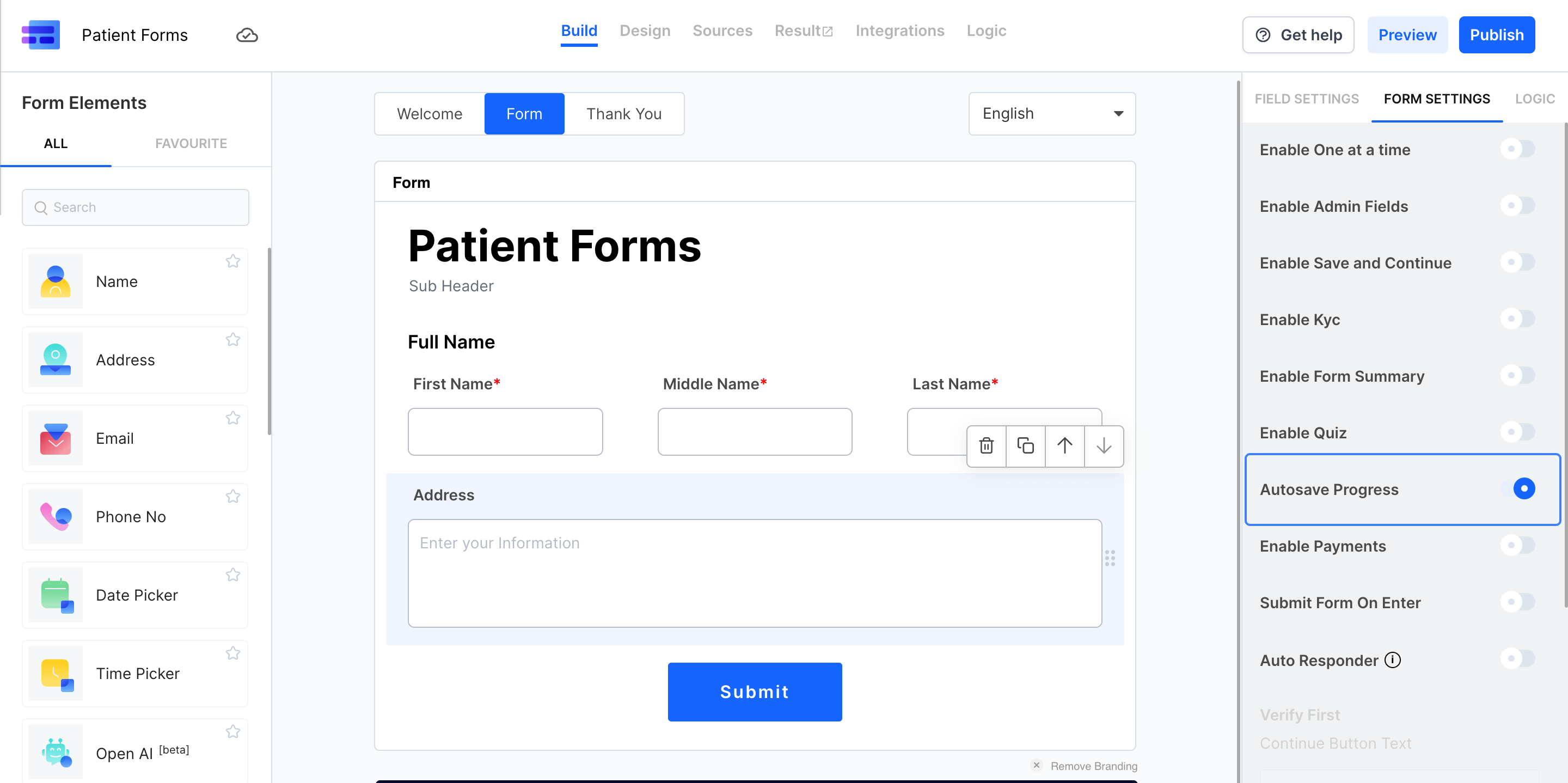
Progress Indicators: Display a progress bar or completion percentage to keep patients informed of their progress throughout the form. This transparency helps manage expectations and prevents frustration.
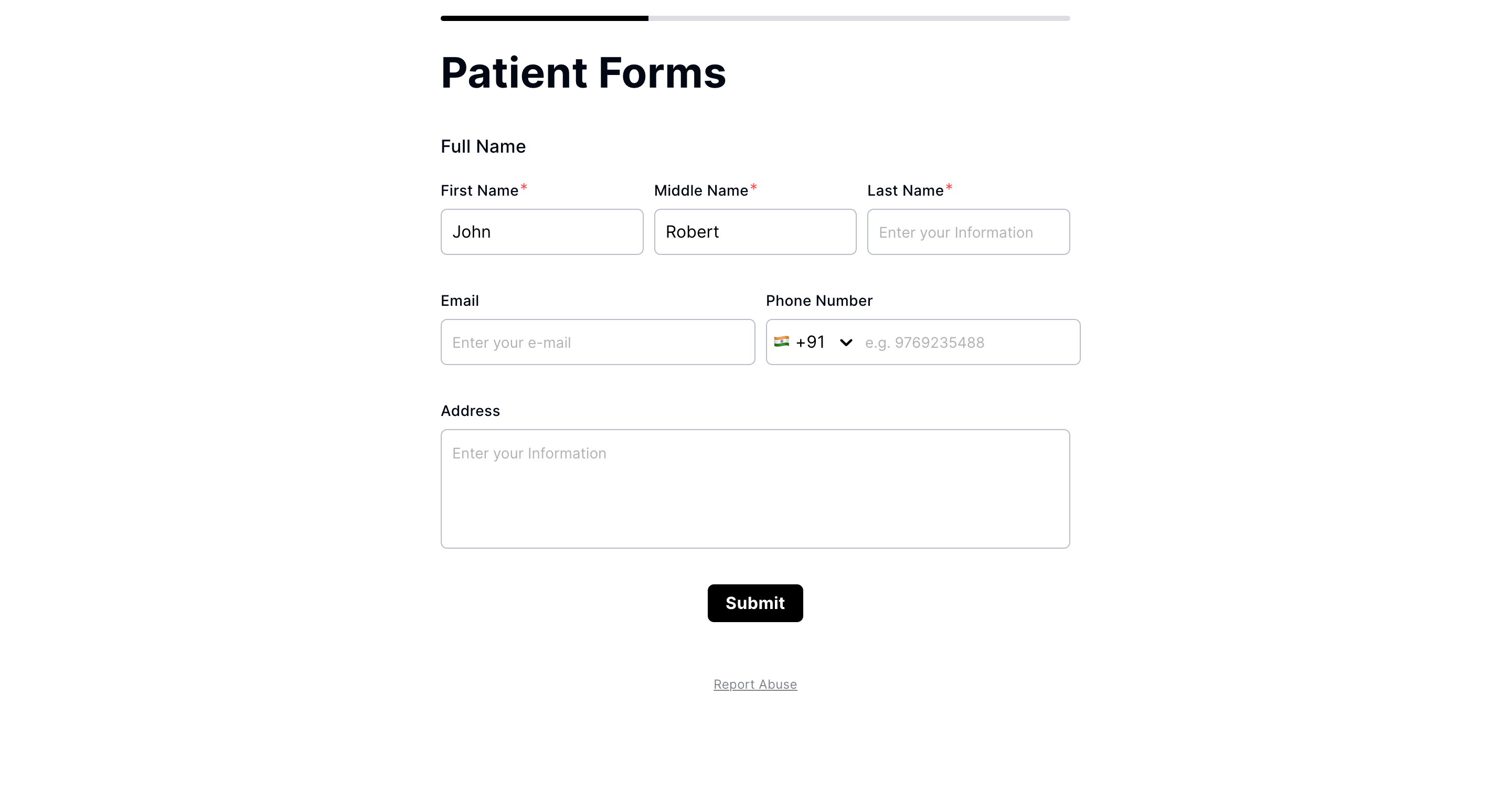
Error Prompts and Real-time Validation: Implement features that highlight errors as the user completes the form. This allows for immediate correction and prevents inaccurate data entry.
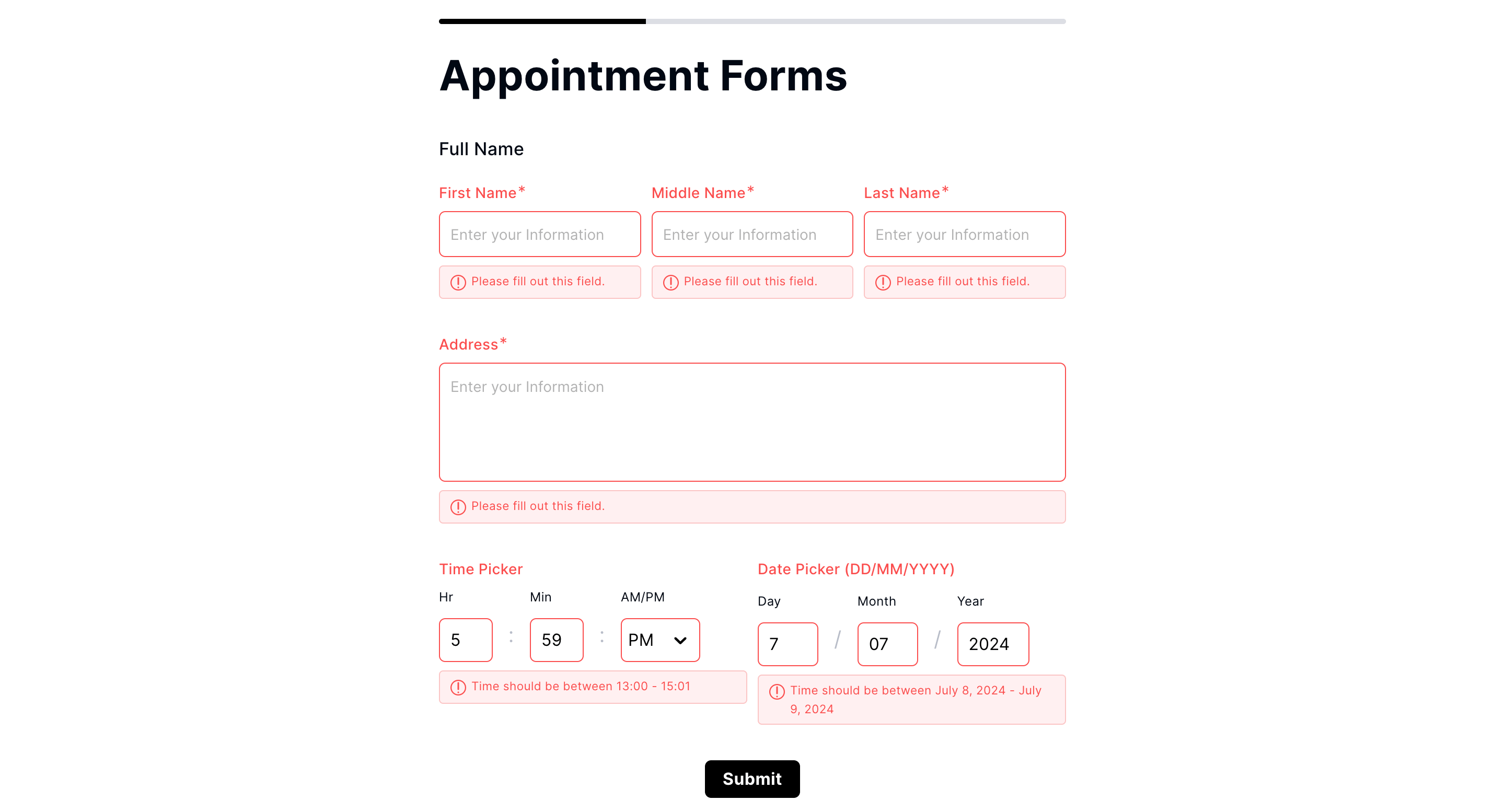
5. Make your forms a one-stop shop:
Allow Uploading Documents: Streamline the process by allowing patients to upload insurance cards, IDs, or other relevant documents directly through the form. This eliminates the need for separate paper submissions and reduces paperwork burdens.
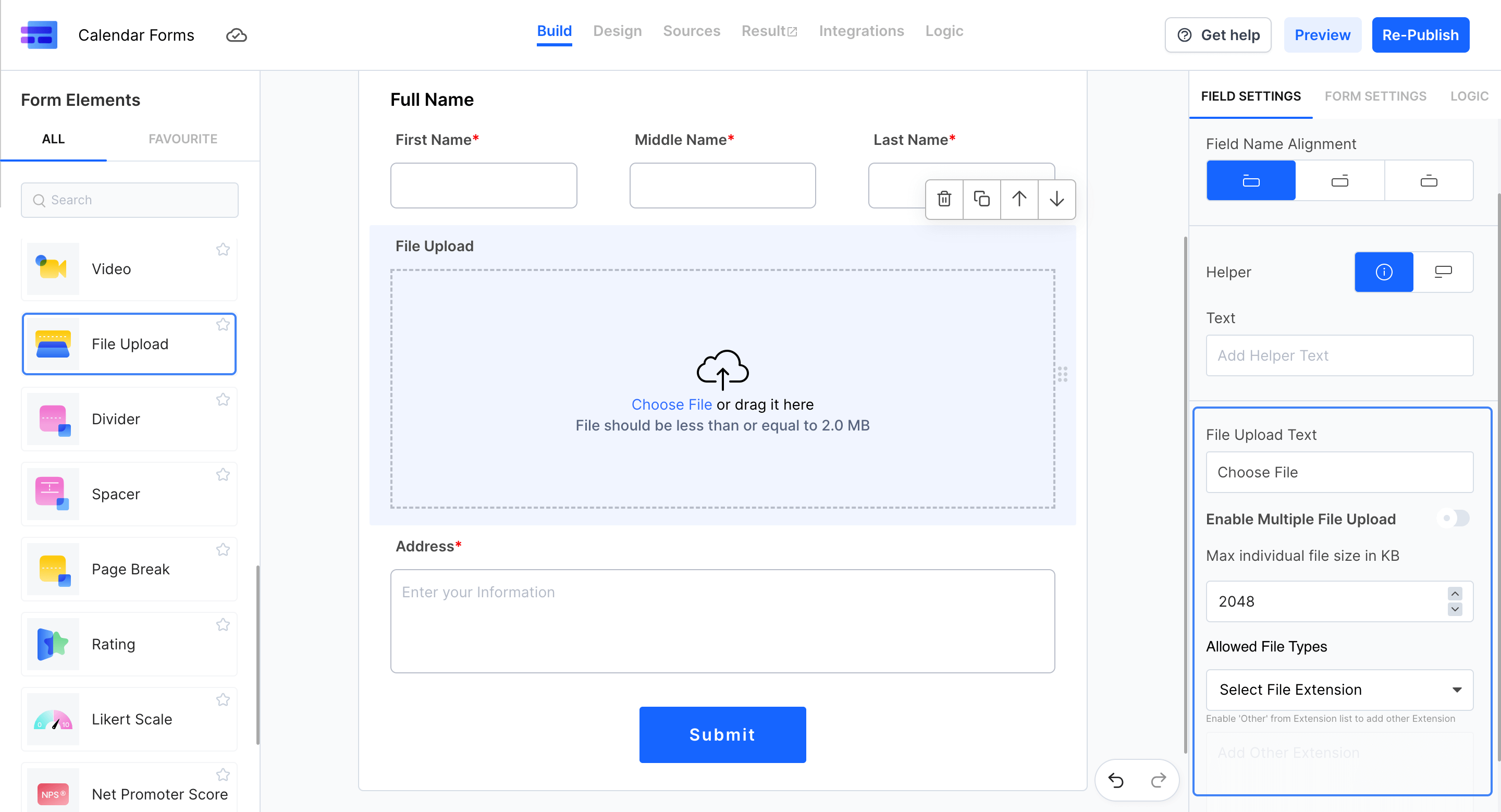
Enable Electronic Signatures: Offer the option for patients to electronically sign consent forms. This not only saves time but also ensures a secure and readily accessible record of patient consent.
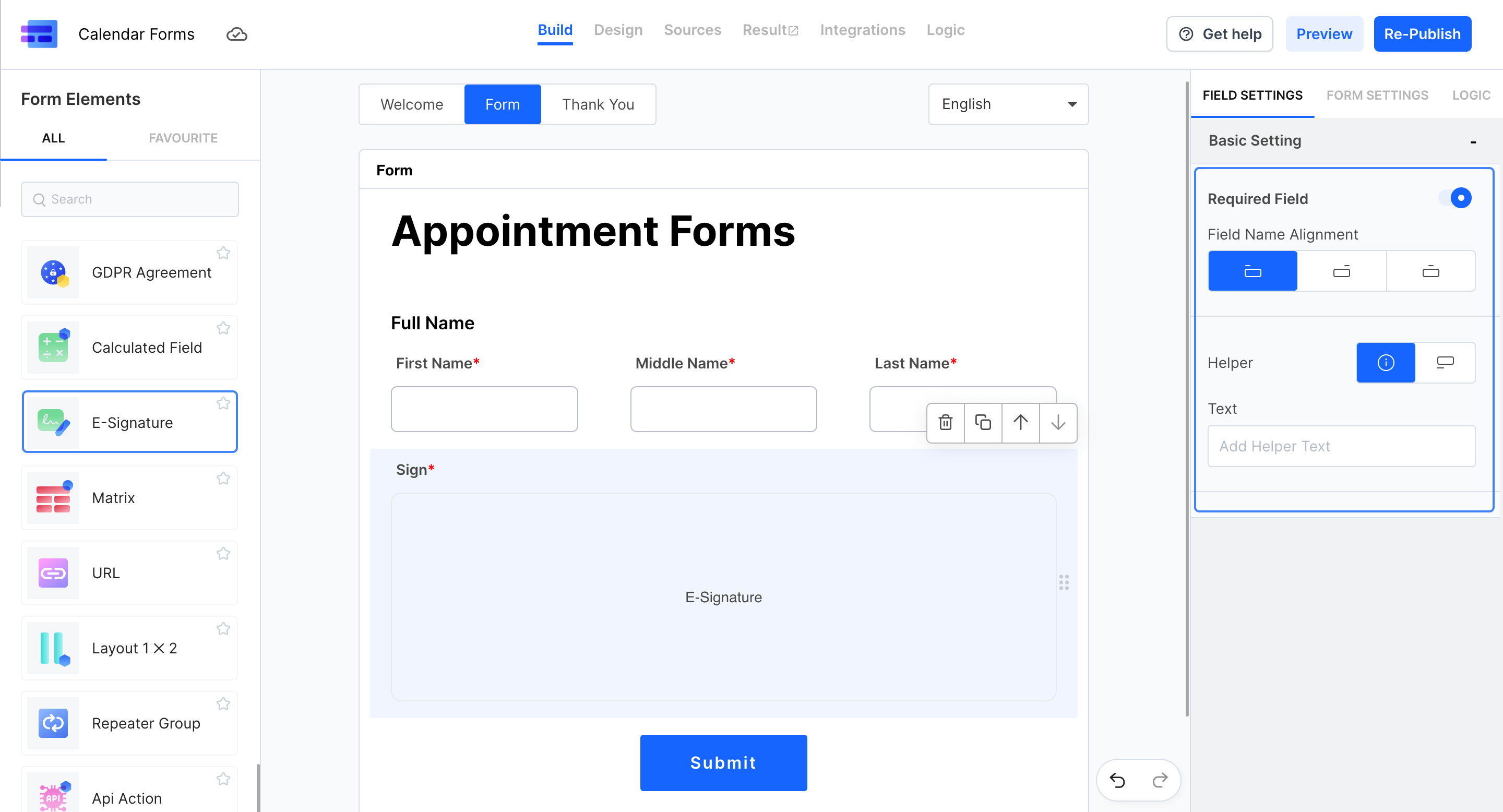
6. Streamline Workflow With EHR Integration
Imagine a world where patient information seamlessly flows from your intake form directly into your Electronic Health Record (EHR) system.
EHR integration eliminates the need for manual data entry, saving staff time and minimizing errors. This translates to:
- Reduced Administrative Burden: No more double-entry of patient data. Information entered on the intake form automatically populates relevant fields in the EHR, freeing up staff for more patient-centered tasks.
- Improved Data Accuracy: Real-time integration minimizes the risk of typos or inconsistencies in patient records, ensuring the accuracy of your data for better informed treatment decisions.
- Enhanced Patient Care: Faster access to complete and accurate patient information allows healthcare providers to deliver more efficient and personalized care.
Choosing an EHR-integrated form builder ensures a smooth workflow and maximizes the benefits of your EHR system.
7. Keep it Secure
Patient data security is paramount in healthcare. User-friendly forms should also prioritize security measures to ensure compliance with regulations like HIPAA (Health Insurance Portability and Accountability Act)
This helps build trust with your patients and ensure their information remains protected.
Here’s what to look for:
- Secure Data Encryption: Ensure the form builder utilizes secure encryption protocols to protect sensitive patient information during transmission and storage.
- Access Controls: Limit access to patient data based on user roles and permission levels within your practice.
- Compliance Features: Choose a form builder that offers built-in features to comply with relevant regulations, such as audit trails and two-factor authentication.
8. Offer Accessibility Features
Creating user-friendly forms extends to ensuring accessibility for all patients, regardless of ability. Here are some key features to consider:
- Screen Reader Compatibility: The form should be compatible with screen reader software used by visually impaired patients. This allows them to access and complete the form independently.
- Keyboard Navigation: Ensure the form can be navigated entirely using a keyboard, providing an alternative option for patients who may have difficulty using a mouse or touchpad.
- Color Contrast: Maintain sufficient color contrast between text and background to improve readability for patients with visual impairments.
- Clear Language and Instructions: Use plain language and clear instructions that are easy to understand for patients with varying literacy levels.
By incorporating accessibility features, you demonstrate inclusivity and ensure all patients can easily complete your intake forms.
Sample Questions to Include in a Patient Intake Form
The specific questions included in a patient intake form will vary depending on your practice and specialty. However, we’ve listed some general categories for you to consider:
- Personal and Demographic Information: Includes name, address, phone number, date of birth, etc.
- Emergency Contact Details: Gathers name and contact information of a person to be reached in case of emergency.
- Insurance and Billing Information: Collects insurance provider details, policy number, and billing information.
- Medical History: Includes the patient’s past medical conditions, surgeries, allergies, medications, and immunizations.
- Lifestyle Information: Includes diet, exercise habits, tobacco use, alcohol consumption, and sleep patterns.
- Primary Care and Referral Information: Includes the name and contact information of the patient’s primary care physician (if applicable).
- Reason for Visit: A clear and concise description of the patient’s presenting symptoms or concerns.
- Consent and Agreements: Consent for treatment, privacy policy acknowledgements, and other relevant agreements.
Why Choose MakeForms?
Choosing patient intake forms that are easy to use is an investment in the efficiency and quality of treatment your practice offers. Consider online form builders such as MakeForms. These platforms offer features that directly address the best practices outlined above.
MakeForms empowers you to design user-friendly forms that can be tailored to your patient experience, and ensure patient privacy with secure data encryption.
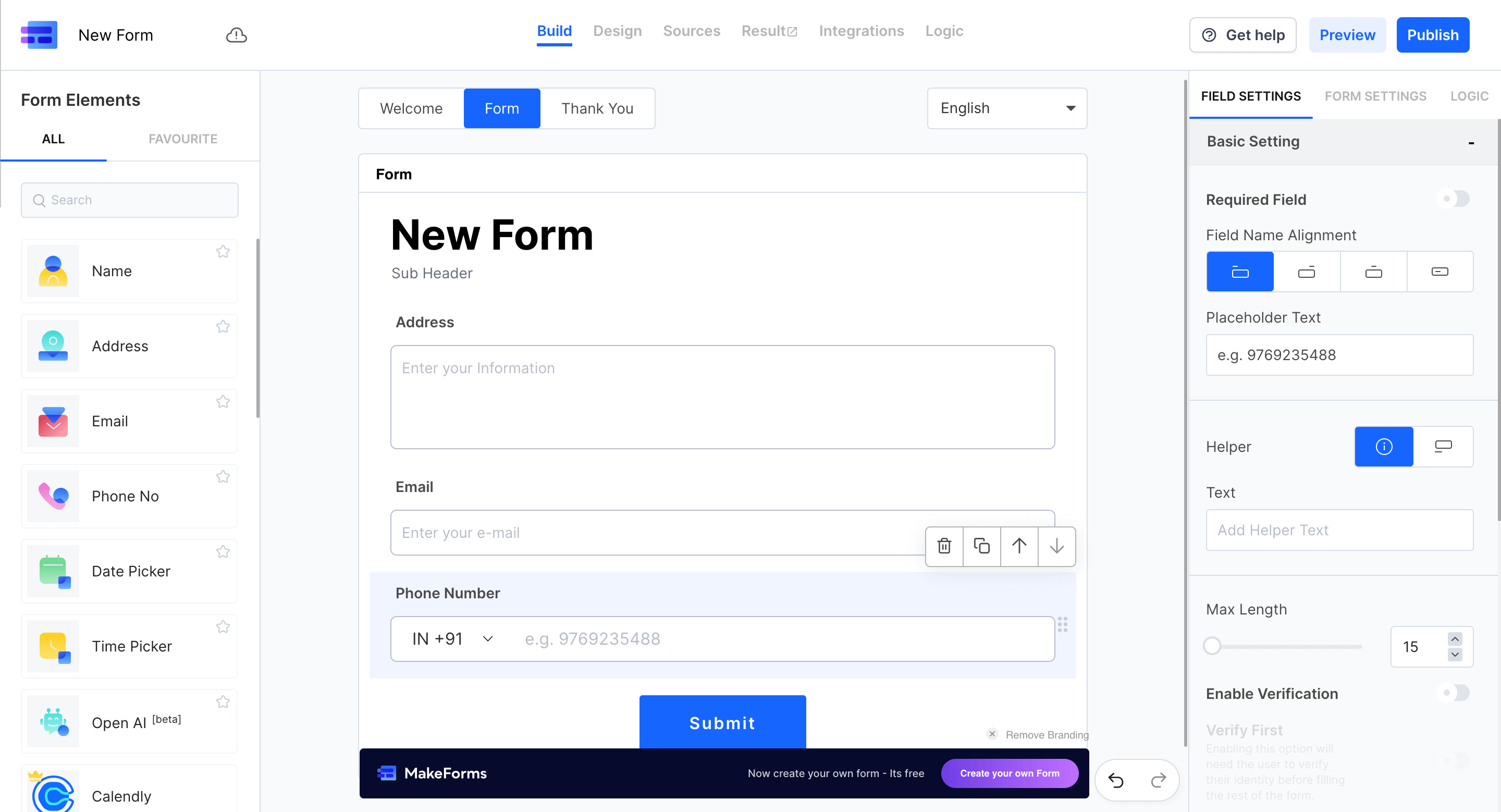
Additionally, their forms are mobile-friendly for on-the-go completion and integrate seamlessly with your existing EHR systems for effortless data management. Explore online form creation tools and see how they can revolutionize your patient intake process.
FAQs
User-friendly patient intake forms are designed with a logical flow, clear language, and mobile-responsive features. Leveraging conditional logic, pre-filled fields, and the ability to upload documents and collect electronic signatures.
These forms improve the patient experience by reducing wait times and errors, which in turn can increase patient satisfaction and engagement. They also enhance the efficiency and accuracy of data collection within healthcare organizations.
These forms reduce the time staff spend on administrative tasks like deciphering handwriting and correcting entry errors. This allows healthcare professionals to focus more on patient care, diagnosis, and treatment.
